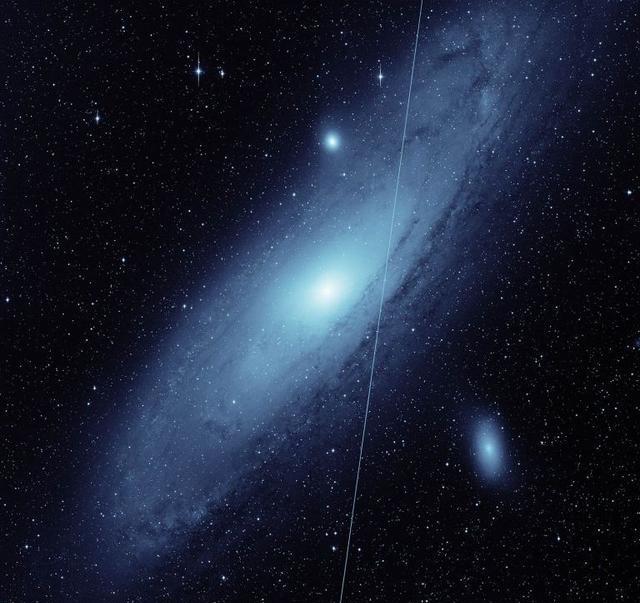Space X's Starlink satellite, led by Elon Musk, maneuvered to the orbital altitude of the Chinese space station several times last year, causing the Tiangong space station to have to adjust its orbit twice urgently to avoid possible collisions, prompting criticism from a Chinese Foreign Ministry spokesman.
Now, the star chain has broken into the field of vision of astronomers, frequently appearing in photos of the starry sky taken for scientific research, making scientists more and more annoyed.
According to a study published Jan. 14 in the Journal of Astrophysical Journals Newsletter, the trajectories of star-chained satellites are included in 20 percent of twilight observations.
With economic and technological developments, more and more satellites are orbiting in Earth's orbit. Most of them are in increasingly crowded low-Earth orbits. SpaceX's Starlink project currently has more than 1,700 satellites in low-Earth orbit. They are notorious for producing bright stripes in astronomical images. But other projects will soon follow StarChain, such as OneNet and Amazon's Kuiper project.
The starlink study investigated the number of starlink trajectories seen in images taken by the Zwicki Transient Facility (ZTF) at the Paloma Mountain Observatory in the United States.
The study found that from November 2019 to September 2021, more than 5,300 stripes appeared in ZFT images. Most of the stripes appear in twilight images taken at dusk or dawn.
In 2019, only 0.5% of twilight images had stripes, but now about one in every 5 twilight images appears with streaks. This is worrying because twilight images are the most important for finding near-Earth asteroids.
Potential meteor impacts that pose the greatest threat to us are the hardest to spot because their orbits are close to the sun in the sky.
There are ways to mitigate the effects of these streaks. For example, painting satellites and adding reflectors may reduce their brightness, especially in the infrared wavelength range, which is important for near-Earth asteroid detection.
But the study notes that Musk's current proposed mitigation strategy is not enough to avoid the impact on astronomy.

Starlink satellite trajectories across the Andromeda galaxy. (Caltech Optical Observatory)